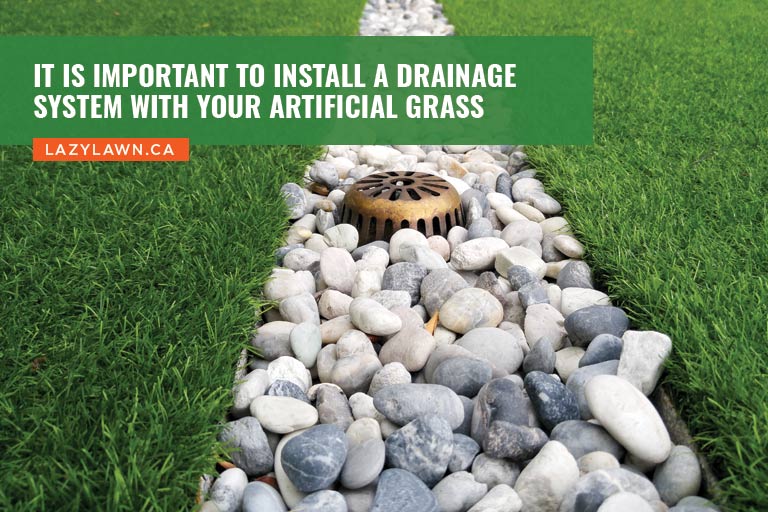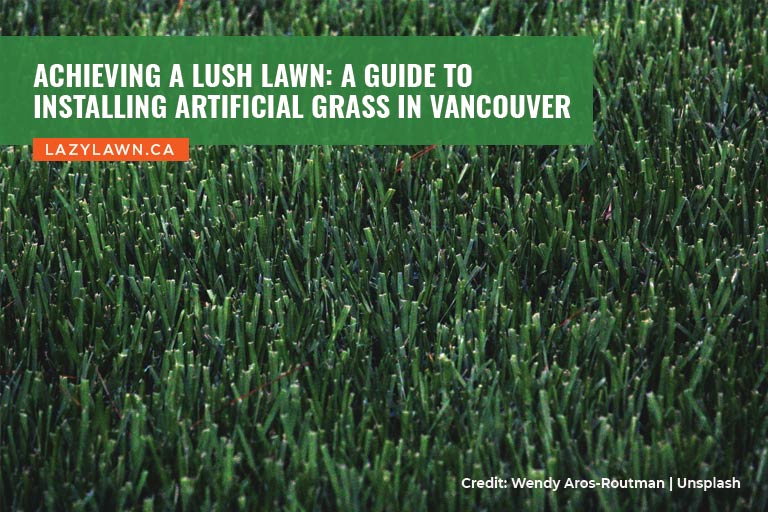Vancouverites are increasingly turning to artificial grass to maintain beautiful lawns despite the city’s rainy climate and the environmental impact of traditional lawn care. Artificial grass, also known as synthetic turf, is a low-maintenance, water-wise alternative to natural grass that remains vibrant throughout the year. Say goodbye to mowing, watering, and fertilizing—artificial turf offers a hassle-free solution for a stunning lawn.
In Vancouver’s unique climate, with its abundant rainfall and varying temperatures, proper installation of artificial grass is crucial for optimal performance and longevity. This comprehensive guide will walk you through the process, ensuring your synthetic turf withstands the elements and remains a lush oasis for years to come.
Tips to Successfully Install Artificial Grass in Vancouver
To set yourself up for success, consider these essential tips before embarking on your artificial grass installation project:
- Choose High-Quality Artificial Grass: Invest in artificial grass engineered to withstand Vancouver’s specific climate, ensuring resilience against heavy rainfall, temperature fluctuations, and UV exposure. Look for products with superior durability, fade resistance, and advanced UV stabilizers for long-lasting colour vibrancy.
- Site Preparation is Key: Meticulous site preparation is paramount for a successful artificial grass installation. Thoroughly remove existing vegetation, level the ground to eliminate unevenness, and compact the soil to create a solid foundation. This step is essential to prevent settling, ensuring a smooth and level artificial lawn that stands the test of time.
- Drainage is Essential: Given Vancouver’s rainy climate, prioritize effective drainage solutions to prevent water accumulation and ensure proper water flow. Install a perforated drainage pipe beneath the base or incorporate a layer of gravel to facilitate efficient drainage, preventing waterlogging and maintaining the integrity of your artificial grass.
- Secure the Edges: Employ appropriate edging materials, such as galvanized steel or flexible plastic bender board, to firmly secure the perimeter of your artificial turf. This step is crucial to prevent shifting or movement, maintaining a clean and polished appearance while ensuring the longevity of your artificial lawn.
- Infill for Stability and Performance: Incorporate infill material, such as silica sand or rubber granules, to enhance the stability, drainage, and overall performance of your artificial grass. The choice of infill and its quantity should align with the specific product and its intended use, providing optimal support and functionality.
- Professional Installation (Optional): While a DIY installation is possible, consider enlisting the expertise of a professional installer with experience in Vancouver’s unique conditions. Their knowledge and skillset can guarantee a flawless installation, saving you time and potential headaches while ensuring the longevity and optimal performance of your artificial lawn.
- Maintenance Matters: Although artificial grass boasts low maintenance requirements, regular upkeep is essential for preserving its pristine appearance and maximizing its lifespan. Incorporate routine brushing to maintain the upright position of the blades and occasional rinsing to remove dust and debris. Promptly address spills and pet waste to prevent staining or damage.
- Choose the Right Underpad: Selecting a suitable underpad is crucial for enhancing the comfort, drainage, and overall experience of your artificial lawn. Opt for an underpad that offers cushioning, improves shock absorption, and facilitates efficient drainage, ensuring a soft and resilient surface while extending the lifespan of your artificial grass.
Specific Considerations for Vancouver

Vancouver’s unique climate and regulations present specific considerations for installing artificial grass:
- Permits and Regulations: Check with your local municipality for any permits or regulations regarding artificial grass installation. Some areas may have restrictions on the type or amount of artificial grass allowed.
- Rainfall and Drainage: Vancouver’s significant rainfall necessitates careful attention to drainage. Ensure proper grading and drainage solutions to prevent water pooling, which can damage the artificial grass and create a breeding ground for mosquitoes.
- Temperature Fluctuations: Choose artificial grass designed to withstand Vancouver’s temperature variations, preventing expansion and contraction issues. Look for products with heat and frost resistance to ensure they maintain their shape and performance throughout the year.
- Environmental Impact: Opt for artificial grass made from recycled or recyclable materials to minimize environmental impact. Some manufacturers offer eco-friendly options made from recycled tires or plastic bottles.
- Professional Expertise: Consider consulting a professional familiar with Vancouver’s specific conditions for optimal installation and longevity. They can assess your site, recommend suitable products, and ensure a proper installation that meets local regulations.
Installing Artificial Grass Step-by-Step

Follow these steps for a successful artificial grass installation in Vancouver:
- Site Preparation: Start by clearing the designated area of any existing vegetation, rocks, or debris. Remove the existing grass layer, ensuring the ground is level and free from bumps or depressions. Compact the soil thoroughly to create a firm and stable base for the artificial turf.
- Base Installation: Apply a layer of crushed rock or gravel over the prepared soil. This layer serves as the foundation for proper drainage, preventing water buildup and potential damage to the artificial turf. Compact the base layer meticulously to ensure evenness and stability.
- Weed Barrier Installation: Lay a weed barrier fabric over the compacted base layer. This barrier acts as a preventive measure against weed growth, maintaining the pristine appearance of your artificial lawn. Overlap the edges of the barrier and secure them firmly using landscape staples.
- Artificial Turf Placement: Unroll the artificial turf over the prepared base, ensuring proper alignment with the desired layout. Trim any excess turf using a sharp utility knife to achieve clean and precise edges. Leave a small gap between the turf and hard surfaces like walls or patios to allow for natural expansion and contraction.
- Seaming and Securing: If your project requires multiple turf sections, join the seams seamlessly using adhesive and seam tape designed explicitly for artificial grass. Utilize a seam roller to firmly press the seams together, creating a smooth and inconspicuous connection. Secure the perimeter of the turf with appropriate edging materials to prevent shifting or fraying.
- Infill Application: Evenly distribute the chosen infill material, such as sand or rubber granules, across the entire surface of the artificial turf. Employ a power broom or stiff-bristled brush to thoroughly work the infill into the turf fibres, ensuring consistent coverage and optimal performance.
Installing artificial grass in Vancouver offers a myriad of benefits, from water conservation and reduced maintenance to year-round greenery. By following this comprehensive guide and considering the specific challenges and regulations of Vancouver’s climate, you can achieve a stunning, low-maintenance lawn that thrives in the Pacific Northwest.
For expert advice and professional artificial grass services, contact Lazy Lawn Canada at 1-888-622-5296 and transform your outdoor space into a lush, vibrant oasis.

